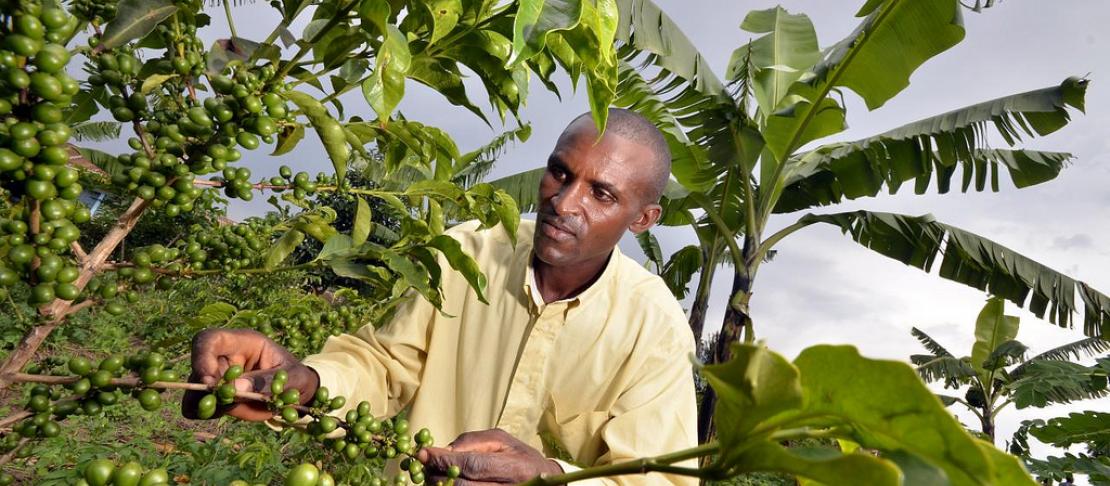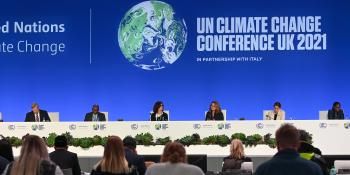How can sustainable intensification make farming climate-smart?

Researchers argue that, with the right practices and incentives, smallholder farmers can boost productivity and help beat climate change.
Agriculture is a cornerstone of the climate change equation. While it is seriously affected by global warming, agriculture is also a major source of greenhouse gases which contribute to the problem in the first place. With more people to feed by 2050 prospects are grim if the sector follows business-as-usual practices. Scientists from the CGIAR Research Program on Climate Change, Agriculture and Food Security (CCAFS) and partners call for sustainable intensification by millions of farmers in the South to drive a much needed climate-smart revolution and help change farming practices. A recently published review paper discusses the links between sustainable intensification and climate-smart agriculture.
During September's United Nations Climate Summit, further evidence of global warming’s accelerating impact was given, from more rapidly melting arctic snow due to soot from increased wildfire to the drop in major crop yields in past decades. Maize global yields, for instance, may have reduced by 3.8% since 1980 due to warmer temperatures, a decrease equivalent to a fifth of current global stocks. Yet, we need to produce much more in coming years as the population bomb is ticking. When we know that the agriculture sector already emits up to 29% of global emissions of greenhouse gases (GHG), we can predict a tremendous rise in carbon emissions from agriculture. To make matters worse, the rapidly changing global diet, fuelled by increasing urbanization, encourages farming of foods with a greater carbon footprint like meat and milk. Meat consumption is expected to reach over 450 million tons by 2050, about 50% more than current global production, which may boost GHG emissions due to the clearing of forests for more pasture.
The harsh competition for scarcer land and water resources between agriculture, industry and mushrooming city development means there is an obligation for farming to produce more crop and livestock with less land and water, and possibly with a smaller carbon footprint. This leaves governments in developing countries with a great dilemma.
A short cut is to intensify agricultural production through large scale commercial farming investments like in Ethiopia where the government has leased over a million hectares since 2005 under its Agricultural Transformation policy. This strategy generates significant revenues and jobs but the social and environmental impact is questionable, including issues like the protection of land use rights for pastoralists and a lack of proper environmental impact assessment of such investments.
In a new analysis, experts claim that sustainable intensification (SI) of millions of resource-poor farmers in developing countries is a good way to fill the food gap. In their view, SI has to be understood as a radical rethinking of our agriculture. If we can promote natural ways to increase the notoriously low productivity on the 1-2 hectares farmed by 500 million smallholder farmers in developing countries, we could help these farms benefit from their major production potential.
Many affordable innovations can improve yields on small farms such as clay pot irrigation or other appropriate on-farm irrigation techniques, access to better seeds that tolerate long dry spells, better soil fertility management and improved animal diets. The cherry on the cake is that these SI practices can also help smallholdings become climate-smart. Farmers reduce their need to clear land for farming as they get more per acre of land and per drop of water. In addition, their higher income means they have more resources to adapt to the changing climate.
Examples of SI's success include banana-coffee intercropping which can increase coffee farm revenue by more than 50% as it reduces pest incidence and helps the shade-loving coffee plants thrive. This approach also has mitigation co-benefits: it can store 15 to 30 tons additional carbon compared to traditional coffee monocropping. In the Sahel, the combination of soil and water conservation practices like stone bunds (mini dams to reduce soil erosion and runoff) and zai pits (planting holes filled with compost or manure) can double millet and sorghum yields.
However, the right policy and market mechanisms have to be in place to encourage the uptake of climate-smart practices by farmers. There may be some trade-offs like the need for extra labour so ways to ensure farmer’s participation are crucial for success. This is nicely illustrated by the example of Gokulpura village's silent climate-smart revolution.
In this village in arid Rajasthan in North-east India, farmers and herders, over fifteen years, changed the way communal lands are grazed and managed. Under a watershed management initiative to fight against rampant land degradation, they agreed to build stone wall fencing to reduce wild grazing of the degraded commons and plant various tree species like the white leadtree (Leucaena leucocephala, named locally subabul) to provide nutritious fodder for their livestock. They were committed to this because of the benefits they saw. Adding leaves from this drought-tolerant tree to the animal diet can treble milk yield per day, or quadruple weight gain per day. By improving animal diet, this silvipasture farming system also improves rural livelihoods and is sustainable, low cost and climate-smart as planting trees in these degraded lands has increased carbon sequestration.
Sustainable intensification of smallholder agriculture, if well conceptualized and promoted, could and should play an important role in contributing to a much needed climate-smart transformation of the global food sector.
Download the article (Open Access)
Sustainable intensification: What is its role in climate smart agriculture? by Campbell BM, Thornton P, Zougmoré R, van Asten P, Lipper L. Current Opinion in Environmental Sustainability 8:39-43, 2014,
Related links
Blog story: Sustainable intensification: a tool in the sustainable food system toolbox
Journal article: Sustainable intensification in agriculture: premises and policies
Blog story: Making sense of sustainable agricultural intensification
About the journal article authors: Bruce Campbell, Philip Thornton and Robert Zougmoré are researchers with the CGIAR Research Program on Climate Change, Agriculture and Food Security (CCAFS). Piet Van Asten is a senior agronomist with the International Institute for Tropical Agriculture (IITA). Leslie Lipper is a senior environmental economist at the UN Food and Agriculture Organisation (FAO).



